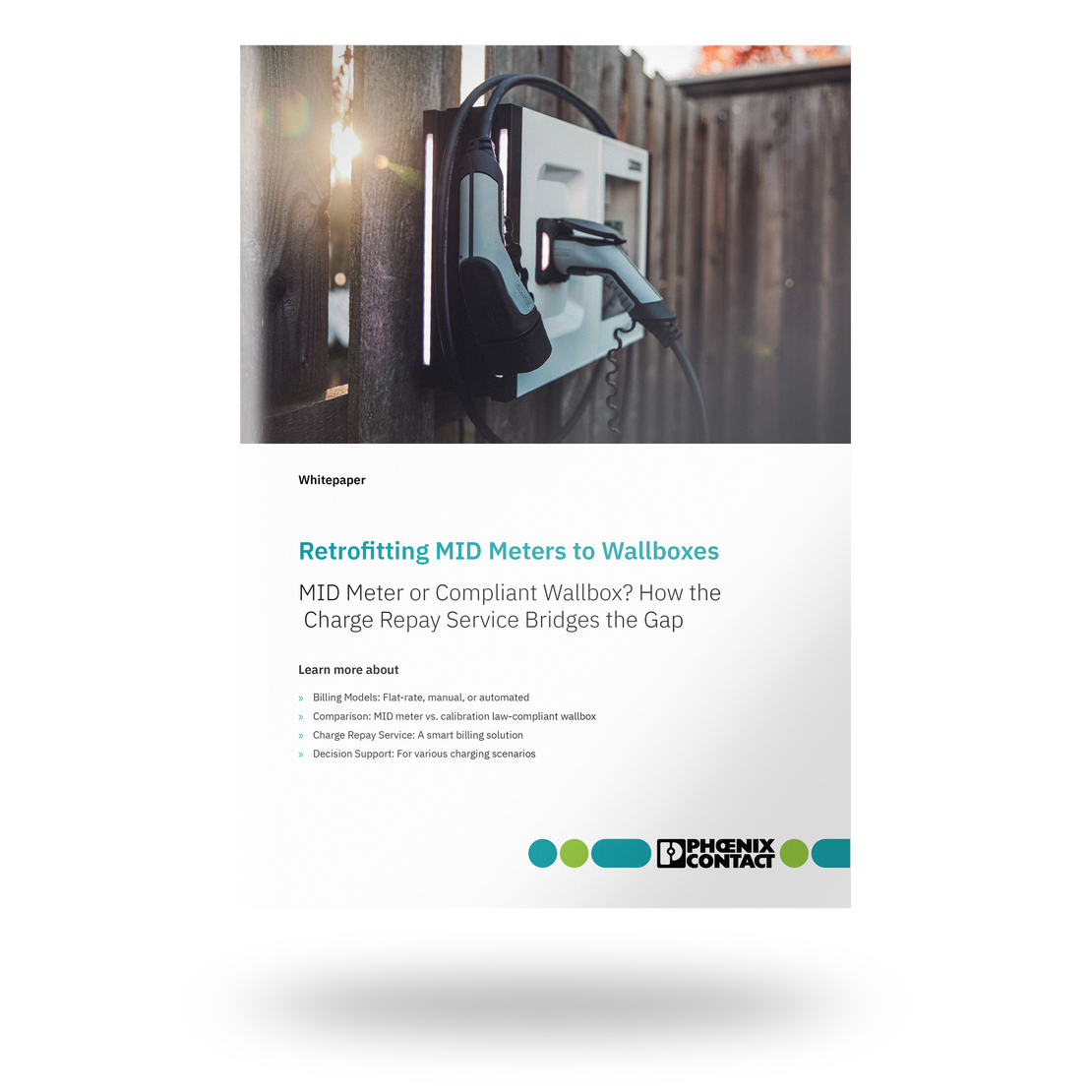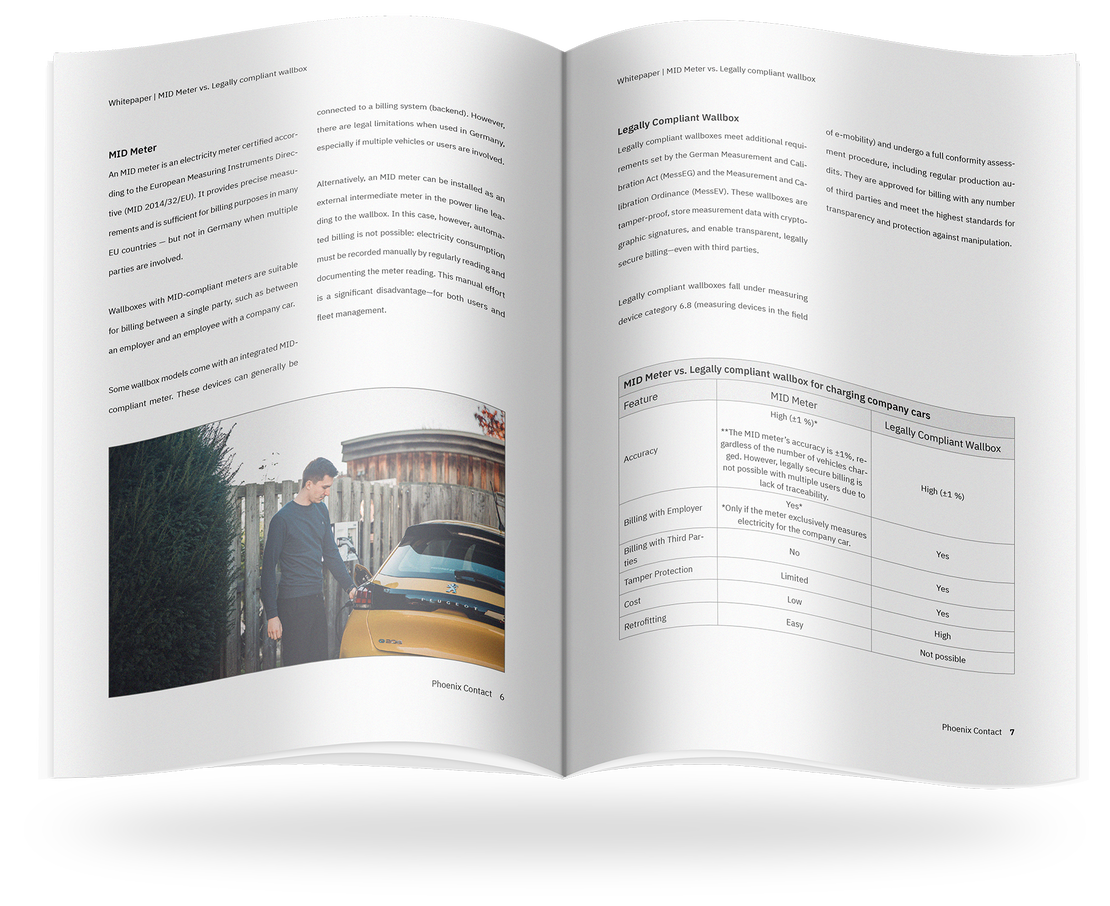
Best Practice: How can I make my home charging solution legally compliant?
Many company car drivers wonder whether they can retrofit their existing wallbox with an MID meter to bill the charged electricity in compliance with legal requirements. In the whitepaper, we show the possibilities and limitations. You will learn when an MID meter is sufficient, when a legally compliant wallbox is necessary, and how the Charge Repay Service bridges this gap—without having to replace your wallbox.
Answers to your billing questions
Billing for electricity charged at home is a challenge for fleet managers and company car drivers alike. There are different methods: flat-rate billing, manual recording with an MID meter, or an automated solution. This whitepaper provides practical insights and shows which models are suitable for different requirements.
Contents

- Introduction | Why billing company car charging at home is a challenge
- Overview of billing models | Comparison of flat-rate, manual, and automated billing
- MID meter vs. legally compliant wallbox | Technical and legal differences, pros and cons
- Retrofitting MID meters | When is retrofitting worthwhile? Requirements, costs, and limitations
- Legal requirements for home use | What is allowed? Requirements for meters and billing
- Legally compliant wallboxes for companies | Overview of transparency, security, and investment costs
- Charge Repay Service as a smart solution | Digital, legally compliant billing regardless of wallbox model
- Comparison & decision-making aid | Which solution fits which scenario?
- Conclusion
